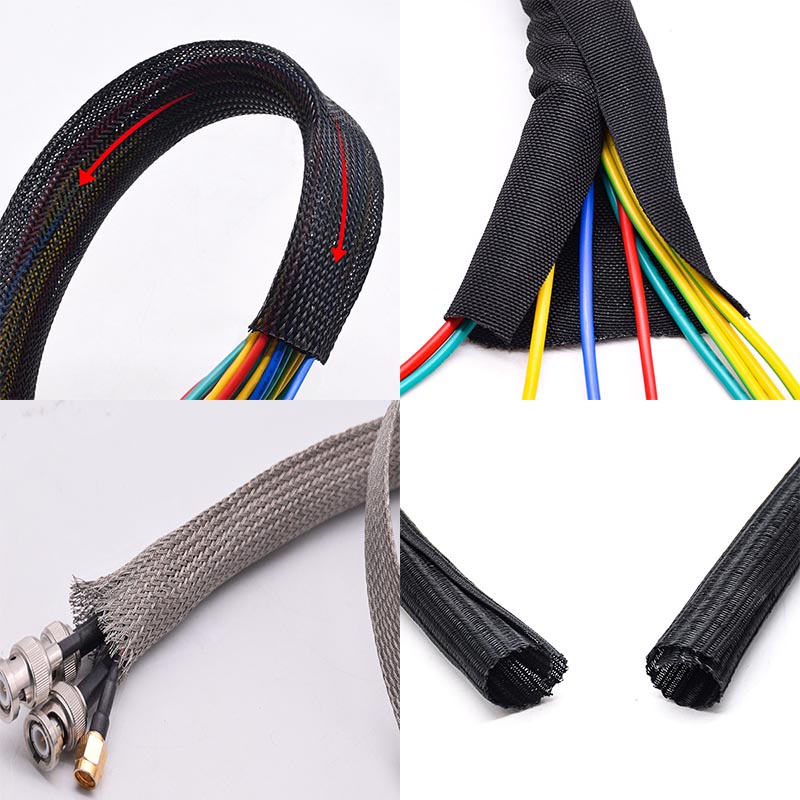May 24, 2024
Braided sleeving is essential in cable management, providing protection, organization, and a neat appearance for wiring and cables. Whether you are an electronics enthusiast, a professional installer, or simply looking to spruce up your home office, choosing the right size braided cover is crucial to achieving optimal results. Here’s a comprehensive guide to help you make the right choice.
1. Measure Your Cable Bundle
The first step in choosing the correct size is to measure the diameter of the cable bundle you intend to sleeve. Here’s how to do it:
Single Cable: Measure the diameter of a single cable using a caliper or ruler.
Multiple Cables: If bundling multiple cables, group them and measure the total diameter. It may be helpful to use a flexible measuring tape for irregular shapes.
2. Consider the Expandability
Braided sleeving often has expandable properties, meaning it can stretch to accommodate a range of diameters.For example, our PET expandable braided sleeve can expand to 1.5 times its resting state.Check the manufacturer’s specifications for the sleeving’s minimum and maximum diameters to ensure it fits your cable bundle comfortably.
3. Account for Connectors and Plugs
If your cables have large connectors or plugs at the ends, ensure the braided sleeving can expand enough to slide over these components. You might need to choose a sleeving with a larger diameter to accommodate these parts without excessive stretching.
4. Review Product Specifications
Once you have your measurements and have selected a material, review the product specifications carefully. Look for:
Diameter Range: Ensure the sleeving can comfortably fit your cable bundle.
Length: Determine how much sleeving you need based on the total length of the cables.
Temperature and Chemical Resistance: Consider the environment where the sleeving will be used.

5. Choose the Appropriate Material
Braided sleeving comes in various materials, each suited for different environments and requirements:
PET (Polyethylene Terephthalate): Like our PET expandable braided sleeve,which is commonly used, offering good abrasion resistance and expandability.
Nylon: For example, nylon self-rolling braided mesh tube provides excellent durability and heat resistance, suitable for high-stress environments.
Metallic: Often used for electromagnetic interference (EMI) shielding, our EMI Tinned Copper Metal Braided Cable Sleeve is better for shielding against electromagnetic interference.
6. Test Fit
Before finalizing your choice, it’s a good idea to test fit a small section of the braided sleeving. This will confirm that the size is appropriate and that you can easily install it over your cables.
7. Additional Tips
Cutting and Fraying: When cutting braided sleeving, use a hot knife or melt the ends with a lighter to prevent fraying.
Ease of Installation: If dealing with long cable runs, consider using a sleeving tool or kit for easier application.